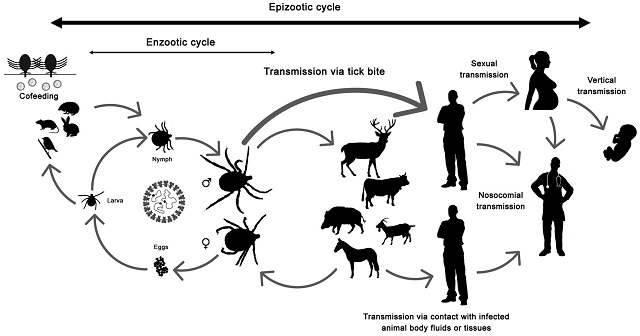
Soroti, Uganda | THE INDEPENDENT | Soroti Regional Referral Hospital isolated a patient confirmed to have Crimean-Congo Hemorrhagic Fever, a widespread disease caused by a tick-borne virus. The patient is a woman from Aprikila Sub County in Kaberamaido District.
She has been admitted to Soroti Regional Referral Hospital on Wednesday after a referral from Kaberamaido Hospital where she was taken to treat a headache and stomachache earlier in the week.
“While in Kaberamaido, we were told that her condition needed further management and she was referred to Soroti Regional Referral Hospital. It is from Soroti that we started hearing about the disease,” one of the nephews said.
The Crimean Congo Fever virus is primarily transmitted to people from ticks and livestock animals, while according to medics, Human-to-human transmission can occur resulting from close contact with the blood, secretions, organs or other bodily fluids of an infected person.
The fever presents with headache, high fever, back pain, joint pain, stomach pain, and vomiting. The patient may also show reddish eyes, a flushed face, a red throat and red spots on the palate, according to information from the Ministry of Health website. Outbreaks have a case fatality rate of up to 40 per cent, yet there is no vaccine available for either people or animals.
Dr Wilson Etolu, a Consultant Physician at the Hospital confirmed that they are managing the patient at the Covid-19 isolation unit.
Viral Haemorrhagic Fevers
Viruses causing haemorrhagic fever are initially transmitted to humans when the activities of infected rodents and humans overlap. The viruses carried in rodent reservoirs are transmitted to human contact with urine, faecal matter, saliva, or other body excretions from infected rodents. However, some of these vectors may spread virus to animals, livestock, for example. Humans then become infected when they care for or slaughter the animals.
Specific signs and symptoms vary by the type of VHF, but initial signs and symptoms often include marked fever, fatigue, dizziness, muscle aches, loss of strength, and exhaustion. Patients with severe cases of VHF often show signs of bleeding under the skin, in internal organs, or from body orifices like the mouth, eyes or ears. Some viruses that cause haemorrhagic fever can spread from one person to another.
In the African Region there are many types of VH fevers which have and continue to pose serious health risks: Marburg and Ebola haemorrhagic fevers, Crimean Congo haemorrhagic fever (CCHF), Rift Valley fever (RVF), lassa fever, yellow fever and the newly emergent arenavirus. All cases of acute viral haemorrhagic fever syndrome whether single or in clusters, should be immediately notified without waiting for the causal agent to be identified.
***
URN
 The Independent Uganda: You get the Truth we Pay the Price
The Independent Uganda: You get the Truth we Pay the Price




The hospital did well to isolate the patient.
Thank you.
this was accurate news